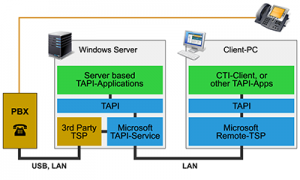 What is Real-Time Communication?
What is Real-Time Communication?
Simple, one example is enough to explain.
An email is NON real-time communication, a phone call is real-time communication
By definition, real-time communication is any form of telecommunication through which all users are able to exchange information instantaneously or with negligible latency. Real-time is also synonymous with Live.
But in the Telecommunications world, what is Real-Time communication (RTC)?
By now we all use online chat or video-calling, thanks to instruments which had a very clear vision of where the future of communication was headed. (I am thinking of Skype which was created by 3 Estonian kids, Jaan Tallinn, Ahti Heinla and Priit Kasesalu, before being purchased by Microsoft).
Continue reading “What is Real-Time Communication?”

 This article is intended for administrators who want to set up a single / multi site PBXs installation and offer to users a CTI (
This article is intended for administrators who want to set up a single / multi site PBXs installation and offer to users a CTI (